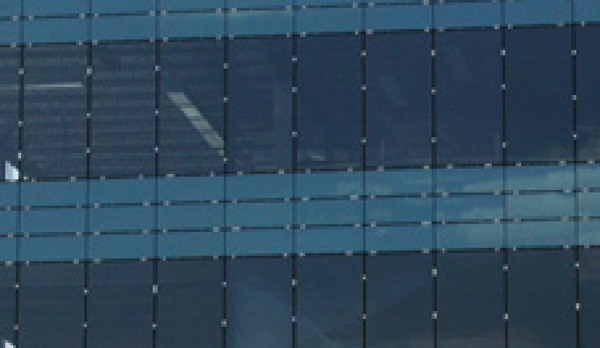During Façade Tectonics #7, a one-day conference held 2 December, Chuck McMullen, national architectural manager for PPG Industries’ flat glass Construction Market Team, demonstrated how much energy could be saved by using low-E glass.
Most architects and designers know that advanced low-emissivity glasses help reduce energy use in commercial buildings. In a recent speech at the University of Southern California (USC) School of Architecture, Chuck McMullen, national architectural manager for PPG Industries’ flat glass Construction Market Team, cited results from an energy modelling study to demonstrate by how much.
During Façade Tectonics #7, a one-day conference held 2 December, and which attracted a standing-room crowd of more than 200 architects, designers and doctoral students, McMullen used the example of a prototype window-walled, eight-story office building in Los Angeles to show that building owners could achieve energy savings of more than USD 37,000 per year when double-silver-coated, low-E glass was specified instead of a spectrally selective tinted glass. When triple-silver-coated, low-E glass was substituted for spectrally selective tinted glass, the annual energy savings for the same building more than doubled to USD 75,728.
McMullen also showed in his “Energy Efficient Glazing: Commercial Glass Selection Criteria” presentation that building owners benefit from advanced low-E glass installations through lower heating, ventilation and air conditioning equipment costs, because the glass blocks the sun’s heat and reduces the need for cooling. According to McMullen’s study, initial investment in HVAC equipment for the prototype building glazed with double-silver-coated, low-E glass was USD 210,000 less than for the same building glazed with spectrally selective tinted glass. The savings with triple-silver-coated, low-E glass totalled more than USD 418,000.
Other energy modelling study findings included:
• specifying triple-silver-coated, low-E glass instead of spectrally selective tinted glass reduced annual heating- and cooling-related electricity use in the window-walled office building by as much as 500 kilowatt-hours;
• natural gas consumption in the same building was reduced 27% with triple-silver-coated, low-E glass;
• triple-silver-coated, low-E glass diminished carbon emissions from the prototype building by as much as 500 tons per year, roughly equivalent to the yearly greenhouse gas emissions of 90 automobiles;
• annual energy savings ranged from USD 10,000 or more for a window-walled, three-story middle school to USD 40,000 or more for a window-walled office building;
• in all building scenarios, energy savings increased in relation to the size of the building and the amount of glass used on the façade;
• in most energy modelling scenarios, the cost of installing triple-silver-coated, low-E glasses was repaid in less than six months through associated energy and equipment cost savings.
McMullen said that, while energy savings from increased daylighting with advanced low-E glass were not factored into the energy modelling study, they could also be substantial.
Façade Tectonics was originally established as a research focus group and is part of the doctoral programme at the USC School of Architecture. The group conducts two conferences each year with presentations by leading architects, engineers, façade designers and researchers.






